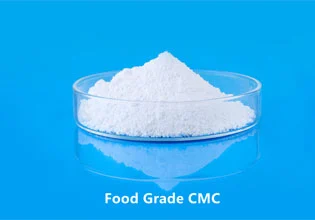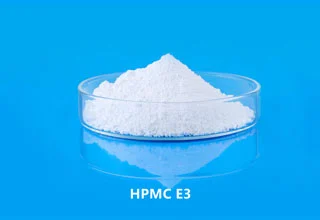What Is Carboxymethyl Cellulose (CMC)
Carboxymethyl cellulose (CMC) is a water-soluble derivative of cellulose, commonly used as a thickening, binding, and stabilizing agent in various industries. It is created by chemically modifying cellulose with carboxymethyl groups, which enhance its solubility and functionality. CMC is widely used in food products, pharmaceuticals, cosmetics, and even in the oil industry as a viscosity modifier. Known for its ability to form gels and improve texture, CMC is also employed in applications such as detergents, paints, and coatings.

What Is HPMC Chemical
Hydroxypropyl Methylcellulose (HPMC) is a versatile, water-soluble cellulose ether produced by chemically modifying cellulose with hydroxypropyl and methyl groups. It is non-toxic, odorless, and biocompatible, making it ideal for use in pharmaceuticals, food products, and personal care items. HPMC acts as a binder, thickener, emulsifier, and stabilizer, enhancing texture, improving viscosity, and controlling release rates in drug formulations. It also has film-forming and gel-forming properties, making it valuable in coatings, paints, and construction materials. Its ability to form stable, clear solutions adds to its wide range of applications.

CMC vs HPMC: What Are Differences
1.Chemical Structure
Carboxymethyl Cellulose (CMC) is derived from cellulose by adding carboxymethyl groups, making it negatively charged and highly soluble in water. This gives it the ability to thicken and stabilize liquids. Hydroxypropyl Methylcellulose (HPMC), on the other hand, is modified with hydroxypropyl and methyl groups, which reduce its water solubility but enhance its gel-forming and film-forming capabilities. These chemical differences affect how each functions in different applications. CMC’s structure makes it better for thickening, while HPMC’s structure allows it to form strong gels and films, offering different functionalities for various industries.
2.Applications
CMC is commonly used in food, pharmaceuticals, cosmetics, and detergents. It is used as a thickener in products like sauces, toothpaste, and in drug formulations to control viscosity. CMC is also used in industrial applications like paper coating and oil drilling fluids. HPMC, on the other hand, is most widely used in pharmaceuticals (especially for controlled-release tablets), construction (as a cement additive), and personal care (in shampoos, lotions). Its ability to form films and enhance texture makes it ideal for applications that require stability, controlled release, and improved texture in gels and coatings.
3.Solubility and Viscosity
CMC is highly soluble in water, making it effective for thickening aqueous solutions at relatively low concentrations. This property is beneficial in liquid-based formulations such as food, cosmetics, and cleaning products. However, it can lose its viscosity in high temperatures or extreme pH conditions. HPMC is less soluble in cold water but forms a gel when dissolved in hot water. Its viscosity can be controlled more precisely, making it useful in applications where consistency and gel formation are essential, such as in controlled-release drug tablets, paints, and coatings, where temperature and pH stability are critical.
4.pH Sensitivity
CMC is sensitive to pH changes because its carboxymethyl groups can react with cations (positively charged ions) in solutions, especially at acidic pH levels. This can affect its solubility and stability in acidic environments, limiting its use in certain formulations. HPMC, however, is more stable over a wide range of pH levels, making it ideal for use in both acidic and alkaline environments. This stability in various pH conditions is particularly beneficial for pharmaceutical applications, where the pH of stomach acids or drug formulations can vary and must remain consistent.
5.Film-Forming Properties
HPMC is superior to CMC in forming films due to its ability to create flexible, strong, and transparent films. This property is especially useful in pharmaceutical coatings, controlled drug delivery, and in cosmetic products where smooth textures are important. HPMC's film-forming ability ensures even distribution of active ingredients and better control over drug release rates. CMC, while it can form films, is not as strong or flexible as HPMC. It is typically used in applications where film formation is not the primary requirement, such as thickening and stabilizing aqueous solutions.
6.Enzymatic Resistance
CMC and HPMC also differ in their resistance to enzymatic degradation. CMC is more susceptible to breakdown by certain enzymes, particularly cellulases, due to the presence of its carboxymethyl groups. This makes CMC less stable in environments where enzymatic activity is high, such as in digestive systems or microbial processes. HPMC, on the other hand, has a more robust structure with hydroxypropyl and methyl modifications, which offer better resistance to enzymatic degradation. This makes HPMC more suitable for applications requiring longer stability, such as in sustained-release drug formulations and coatings exposed to biological environments.
| Feature | Carboxymethyl Cellulose (CMC) | Hydroxypropyl Methylcellulose (HPMC) |
| Chemical Structure | Cellulose derivative with carboxymethyl groups (negatively charged) | Cellulose derivative with hydroxypropyl and methyl groups |
| Primary Function | Thickening, stabilizing | Gel formation, film formation, thickening |
| Applications | Food, pharmaceuticals, cosmetics, detergents, industrial uses | Pharmaceuticals (controlled release), construction, personal care |
| Solubility | Highly soluble in water | Less soluble in cold water, forms gel in hot water |
| Viscosity | Effective thickener at low concentrations, sensitive to temp/pH | More precise viscosity control, stable at varying temp/pH |
| pH Sensitivity | Sensitive to pH changes, especially acidic | Stable over a wide pH range |
| Film-Forming | Forms films, but less strong and flexible than HPMC | Superior film formation: strong, flexible, transparent |
| Enzymatic Resistance | Susceptible to enzymatic degradation | More resistant to enzymatic degradation |
 English
English 日本語
日本語 français
français Deutsch
Deutsch Español
Español italiano
italiano русский
русский português
português العربية
العربية Türkçe
Türkçe Nederland
Nederland





